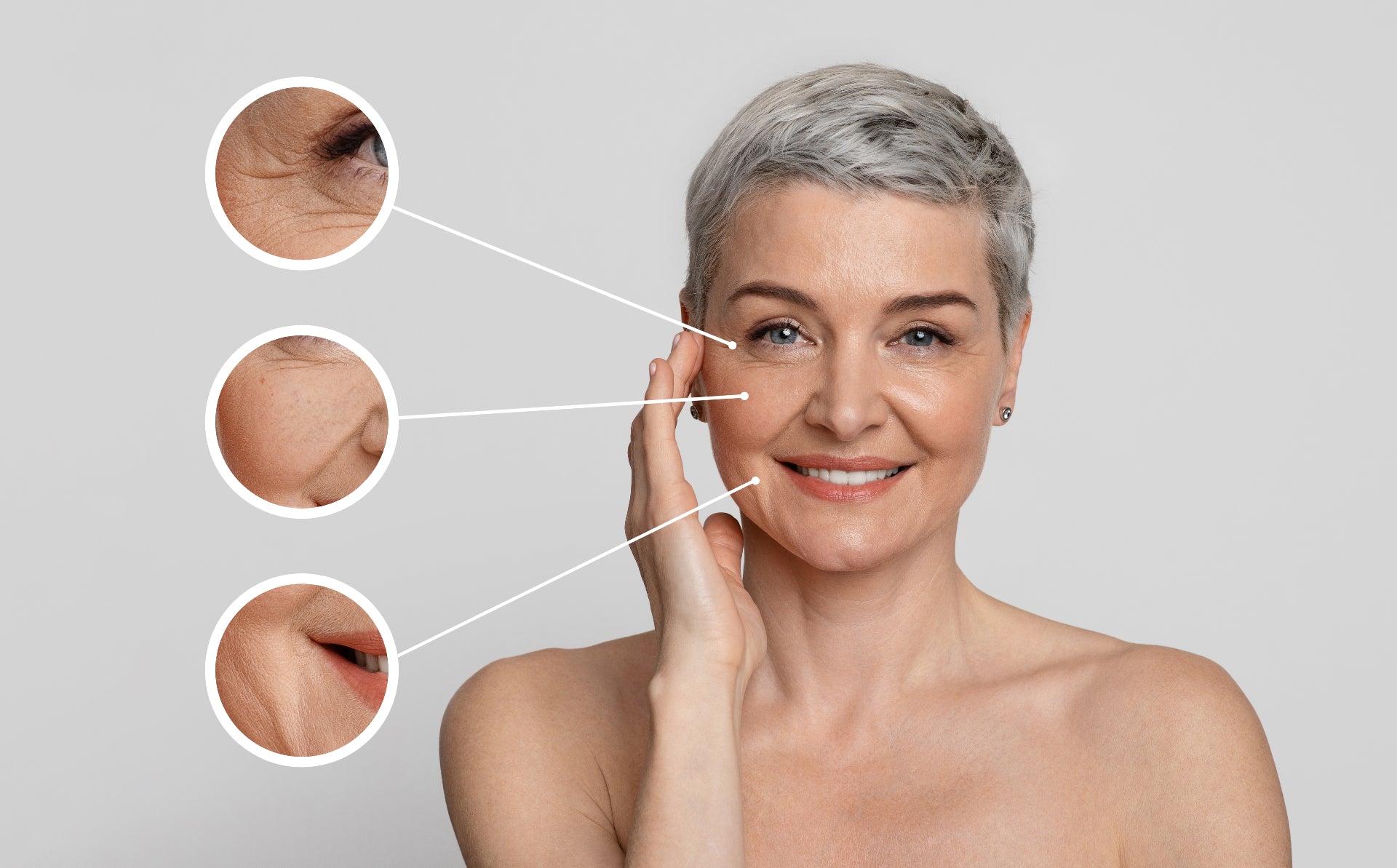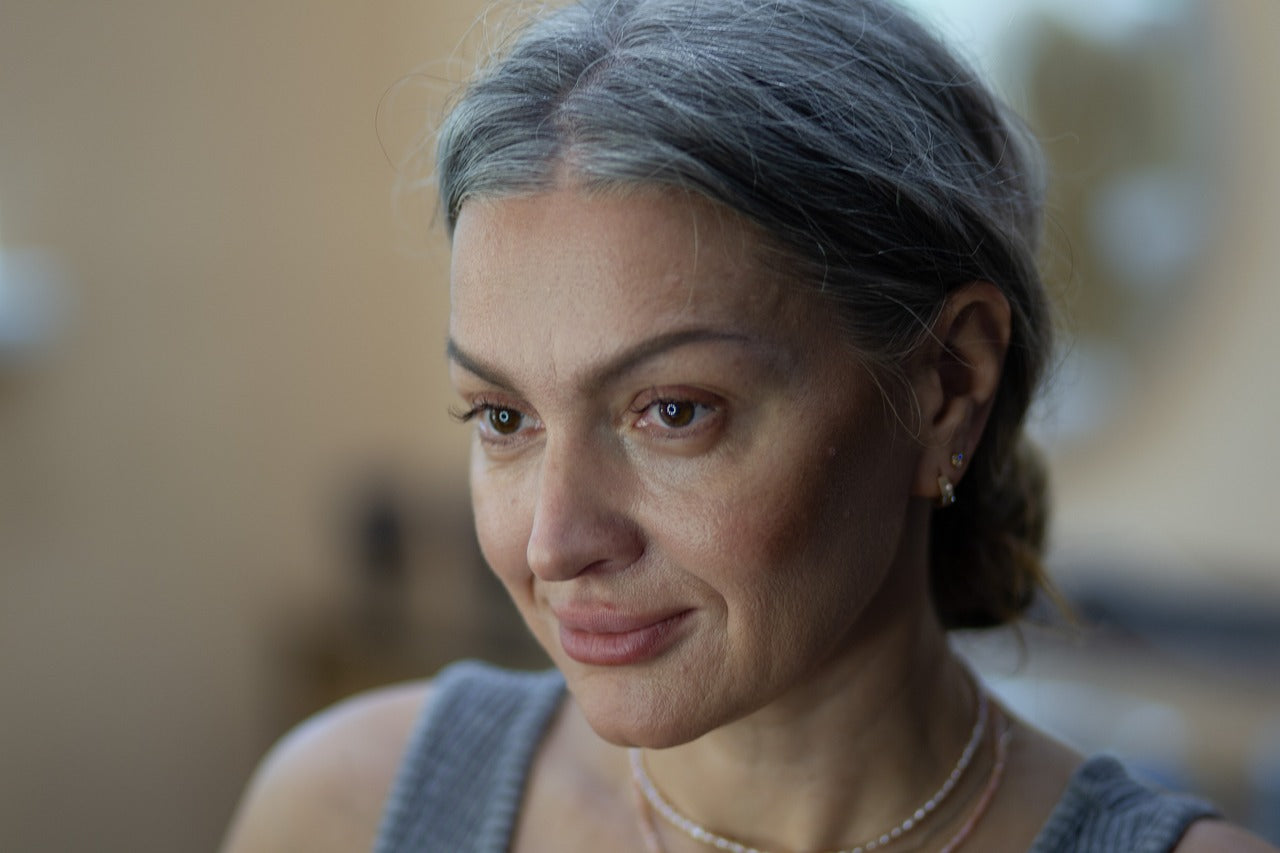Medically Reviewed by Dr. Lisa Hartford, MD
Skin aging is attributed to changes that include pigmentation, atrophy, rhytides, and decreased ability for wound healing. Although some invasive procedures may result in desirable aesthetic outcomes, non-invasive procedures have been recently gaining attention for the comfort they offer to patients, among which are the treatments involving energy-based and light technology like Light emitting diode (LED) phototherapy. Light therapy is a novel technology that was only recently introduced in the aesthetic field, which aims to improve skin feeling and appearance by applying certain wavelengths of light to the skin tissues. Different wavelengths of LED light are used on the skin according to the target chromophore. Among the multiple wavelengths of light, three types have noteworthy therapeutic potential: blue (415nm), red (633nm), and near-infrared (830nm). Photobiomodulation activates cellular mitochondrial respiratory pathways, resulting in the stimulation of growth factors, collagen synthesis, and fibroblast proliferation. This process of stimulation leads to the reduction of rhytids and the lifting and tightening of lax skin. LEDs have a wide range of aesthetic applications, either as a stand-alone procedure or along with other aesthetic procedures, such as laser resurfacing, intense pulsed light, peels, injections, and micro-needling.
Still, LED technology may put treated patients at risk of experiencing skin itching, burning, and other side effects. These possible side effects can be avoided by adopting a few strategies. Some of these strategies offer the additional benefit of helping patients get the optimal results of their light therapy sessions. Essentially, all of these methods work on removing dirt and oil from the skin to allow the light to penetrate the skin more effectively. On the other hand, there are several approaches that can help your skin reach its fullest potential after receiving the LED treatment.
Sunscreen: Blocking Harmful Ultraviolet (UV) Radiation & Beneficial LEDs
There is no doubt that applying sunscreen can protect from the harmful effects of Ultraviolet (UV) Radiation, such as skin aging, eye damage, and even skin cancer. However, the effect of self-tanning products works against the skin when it comes to receiving red light therapy; by blocking the penetrating infrared wavelength from 650nm to 850nm. “Cleanse skin prior to red light therapy so that no makeup or sunscreen is on the face,” says Dr. Tiffany J. Libby, board-certified dermatologist and director of Mohs micrographic and dermatologic surgery at Brown University. The optimal method to remove sunscreen varies depending on the type used:
- Non-waterproof sunscreens can be washed off with either a regular cleanser or cleansing oil (regular cleanser may cause some skin irritation and dryness compared with the cleansing oil.)
- Waterproof sunscreens can be washed off with cleansing oil.
- Water can be used to partially remove some sunscreen products, but this method is not as efficient as using a regular cleanser or cleansing oil.
Cosmetic Products: A Cause Of Common Skin Woes
Cosmetic beauty products include a variety of additives like preservatives, mineral pigments, stabilizers, shine, and dye to give a more desirable effect for consumers. Some of these additives may not only have irritating and allergic effects on human health but can also prevent you from gaining the maximal anti-aging benefits from your light therapy session. Removing makeup is a critical step before you start your light therapy procedure. Dr. Charlotte Birnbaum., a New York City-based board-certified dermatologist, explains how makeup can cause skin issues, such as irritation and breakouts, and skin aging when not washed properly. When receiving LED treatment, these cosmetic products may hinder a significant amount of beneficial light from penetrating the skin, reducing the level of satisfaction with the procedure’s results.
During the short amount you will be given before the session begins, make sure your skin is well-prepared by removing any makeup. In most cases, skin preparation may take from fifteen to thirty minutes prior to the session. This is the time when you remove any products that may hinder the beneficial effects of light therapy, including but not limited to makeup. “Choose a makeup remover depending on the type and amount of makeup you wear. It should easily remove makeup without rubbing or leaving the skin red and irritated,” says Dr. Jessica Wu, a Los Angeles-based dermatologist, and author of Feed Your Face.
Skin Exfoliation: Removing Dead Skin Cells From The Top Layer Of Skin
There are different wavelengths of the visible light spectrum, each distinctive one corresponds to a different LED light color and penetrates the skin to varying depths. The results of this procedure differ depending on how deeply the LED lights penetrate the skin. A light therapy session includes the patient being given a facial in a spa or beauty clinic, then the therapist will thoroughly clean the face and apply an exfoliating chemical on the skin. Essentially, the exfoliation process removes dead skin cells to allow the light to effectively penetrate the skin. It is encouraged t use common preparations like salicylic acid, glycolic acid, alpha hydroxy acid, or retinoids to avoid skin irritation.
Topical Creams: Safeguarding Skin from Potential Damage
Exposure to the blue spectrum laser's high intensity can result in skin dryness, cracking, and peeling after the treatment, hence, it is crucial to ensure skin protection by applying a cream that contains Salicylic Acid or Reductase. It is important to be aware that there are certain types of creams containing ingredients that can result in skin dryness and irritation if not washed off before receiving the LED treatment
Topical Vitamin A-based Drugs: Maximizing the LED Phototherapy Benefits
Retinoids, also known as topical vitamin A–based drugs, were first introduced to the field of skin care as an acne treatment. Later, research showed that retinoids were also effective in speeding the turnover of superficial skin cells, diminishing actinic keratosis spots, and evening pigmentation. It was shown that the application of retinoids on the skin increases the production of collagen and stimulates the formation of new blood vessels. Topical vitamin A–based drugs have also the added benefit of softening rough patches of skin and fading age spots. Because the anti-aging benefits of retinoids have some similarities with those of light therapy, incorporating them into your skincare routine may help amplify the procedure’s results.
“By improving cellular function, red light therapy has been shown to increase the production of collagen [and] help with skin tone and texture as well as fine lines and wrinkles,” Libby says. “Studies also show improvement in acne by calming redness and inflammation.” Over-the-counter (OTC) products that contain retinoids, such as retinol, can be used after light treatment for enhanced results. These products are not as irritating or drying as stronger retinoids. On the other hand, retinoids provide relatively better anti-aging results compared to OTC retinol.
Hyaluronic Acid: Naturally Produced vs. Topical
The loss of moisture in the skin is one of the contributing factors to human skin aging. The prominent molecule involved in skin moisture is called Hyaluronan or hyaluronic acid (HA), mainly a glycosaminoglycan (GAG) capable of binding and retaining water molecules. ECM molecules that lie between cells were proven to have significant effects on cellular function. By light microscopy, ECM molecules appear amorphous, but they make an organized structure that consists of GAG, structural proteins like collagens, and proteoglycans growth factors. Despite this, HA is still the predominant component of the skin ECM.
Research has shown that when human skin cells get exposed to low-level red and infrared LED lights, increases hyaluronic acid synthase (HAS2) in fibroblasts in 3 days. Furthermore, the exposure of fibroblasts d to infrared or red light can increase the synthesis of hyaluronic acid, collagen protein, and elastin protein. The ability of the skin to retain moisture can be enhanced by the application of topical hyaluronic acid, which can also help treated patients see better hydrating results of LED light therapy.
Green Tea: Beyond Health Benefits
Green tea and red light have been proven to be effective when it comes to rejuvenation, according to a 2009 study. After two months of extreme oxidative stress green tea-filled cotton pads were placed on the skin for 20 minutes once a day before LED treatment with an array of light-emitting diodes, with central wavelength 670 nm, dermal dose 4 J/cm2. The outcome demonstrated reduced wrinkle levels, rejuvenated skin, and juvenile complexion. These results, which were previously achieved in ten months of light treatment alone, were achieved in only one month. The beneficial effects of combining the reactive oxygen species scavenging capacity of green tea with the physicochemical and biological effects of light therapy can extend to biomedical light applications and cosmetic formulas, such as graying of hair
LED Light Therapy: Safety Concerns & How To Limit Side Effects
Safety is an important aspect of LEDs, being both nonablative and nonthermal, and they do not damage the epidermis or dermal tissue when used alone. The use of LED phototherapy devices is not associated with adverse events, with patients experiencing little to no downtime. It is not expected for patients to experience any redness, peeling, swelling, blistering, or pain when LED phototherapy is used alone. It is also possible to have the procedure during lunch hour and immediately return to work once it is completed. LED lights are a scientifically-proven method to improve the appearance of photoaged skin. Unlike thermal-based skin-tightening devices, LED lights do not cause any thermal injury. It is a nonthermal procedure involving endogenous chromophores in order to stimulate photochemical and photophysical events.
While Photodynamic light therapy is generally safe, there are some reported, avoidable side effects of this procedure, including redness, swelling, burning, stinging, scaling, and crusting. Avoiding exposure to direct and indirect sunlight for 48 hours after receiving the treatment can significantly decrease the risk of experiencing these skin reactions. Applying sunblock containing titanium dioxide or zinc oxide can also help you avoid potential side effects of the treatment.
Receiving a professional, safe LED treatment does not necessarily have to be in a clinic; instead, you can get desirable outcomes at home by using a professional-grade, portable LED face mask like the EvenSkyn® Mirage. This safe, at-home LED face mask comprises an industry-leading 204 individual units of the most powerful LEDs ever manufactured, offering users noticeable results within only four weeks, including reduction in wrinkles and fine lines, and improvement in skin laxity, texture, and health.
References
Ablon G. Phototherapy with Light Emitting Diodes: Treating a Broad Range of Medical and Aesthetic Conditions in Dermatology. J Clin Aesthet Dermatol. 2018 Feb;11(2):21-27. Epub 2018 Feb 1. PMID: 29552272; PMCID: PMC5843358.
Hornby S, Walters R, Tierney N, Appa Y, Dorfman G, Kamath Y. Effect of commercial cleansers on skin barrier permeability. Skin Res Technol. 2016; 22(2): 196- 202.
Huang A, Nguyen JK, Ho D, Jagdeo J. Light Emitting Diode Phototherapy for Skin Aging. J Drugs Dermatol. 2020 Apr 1;19(4):359-364. doi: 10.36849/JDD.2020.4711. PMID: 32272511.
Kaličanin B, Velimirović D. A Study of the Possible Harmful Effects of Cosmetic Beauty Products on Human Health. Biol Trace Elem Res. 2016 Apr;170(2):476-84. doi: 10.1007/s12011-015-0477-2. Epub 2015 Aug 23. PMID: 26296330.
Kong BY, Sheu SL, Kundu RV. Assessment of consumer knowledge of new sunscreen labels. JAMA Dermatol. 2015; 151(9): 1028- 1030.
Papakonstantinou E, Roth M, Karakiulakis G. Hyaluronic acid: A key molecule in skin aging. Dermatoendocrinol. 2012 Jul 1;4(3):253-8. doi: 10.4161/derm.21923. PMID: 23467280; PMCID: PMC3583886.
Sommer AP, Zhu D. Green tea and red light--a powerful duo in skin rejuvenation. Photomed Laser Surg. 2009 Dec;27(6):969-71. doi: 10.1089/pho.2009.2547. PMID: 19817517.









Leave a comment
All comments are moderated before being published.
This site is protected by hCaptcha and the hCaptcha Privacy Policy and Terms of Service apply.